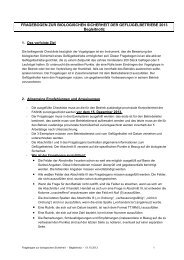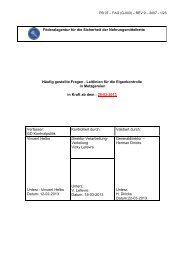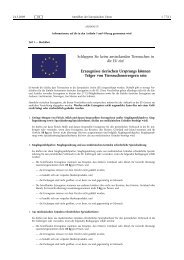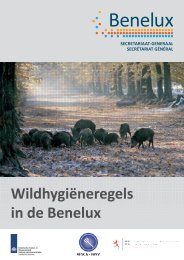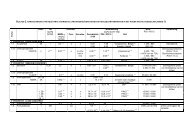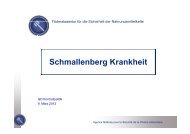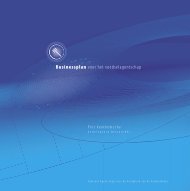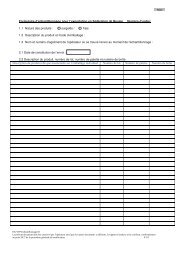E A I U S E R M A N U A L - Favv
E A I U S E R M A N U A L - Favv
E A I U S E R M A N U A L - Favv
- TAGS
- favv
- www.favv.be
Create successful ePaper yourself
Turn your PDF publications into a flip-book with our unique Google optimized e-Paper software.
8. Q: Can we put local animals and foreign animals in one SlaughterFile*<br />
A: No, you can not. The origin code (ORIG_CDE) has to be filled in on<br />
SlaughterFile level and indicates if the animals come from abroad or local. So you<br />
need to split the declaration<br />
9. Q: I get PATY_CDE mandatory FCLT_CDE mandatory messages. What do they<br />
mean? *<br />
A: I agree the error messages are not always optimal – but it typically refers to not<br />
specified or incorrectly specified parties (Submittor, Owner, Transporter) or<br />
facilities. Please check whether your specified codes are filled in and are in the<br />
correct format (BE12345678)<br />
10. Q: What’s the difference between SAV (Saving) and SUBM (Submitting) a<br />
declaration? *<br />
A: As soon as you SUBMit a declaration, it is the signal that the inspections can<br />
take place and it cannot be altered anymore. When SAVing a declaration you can<br />
do an update later (e.g. if you want to change weight categories or so…)<br />
However a manual or XML – SUBM-it is needed to progress the workflow.<br />
11. Q: I just use trial and error and sometimes the messages are somewhat hard to<br />
understand. Is there a possible overview of all that can go wrong? What other<br />
messages are there?<br />
A: I agree the error messages are not always optimal, and unfortunately I do not<br />
have an exhaustive list of all possible errors you can make when doing trial and<br />
error XML filling, but it is a point where we try to improve continuously. The<br />
most visible error checking is on the possible code-value schema’s and mandatory<br />
fields, but excessive field lengths or duplicate keys can result in less user friendly<br />
messages… On the other hand this is not an online application, but a datainterchange<br />
protocol with ‘trusted party’ applications – so we do can assume<br />
some basic validation at the input side ;-)<br />
12. Q: Is there a manual of the online application? Where can I get them?<br />
A: There are three manuals: The EAI Manual (this one – in English only), a<br />
getting started manual with general application navigation tips (In Dutch and<br />
French) and a functional manual for the Slaughtering functionality (Also in Dutch<br />
and French). In total these manuals add up to over 10 MB so they cannot be easily<br />
send around. The manuals are distributed during the training and FAVV-AFSCA<br />
has made them available via the web site too. You can find all manuals by<br />
clicking the info-centre link on the top-right side of the application screens<br />
13. Q: What integration scenario is preferred?<br />
A: As described above both scenario’s 1and 2 (Web Service and Secured<br />
Streaming) are the preferred ones. The Web Service has one additional advantage<br />
and that is that a local ‘object structure’ can be created rather than working with<br />
the XML itself. The Streaming has the advantage that you can use scenario 4 to<br />
test your stuff first…<br />
Sanitel EAI Manual – v1.28 EAIManual.doc 129


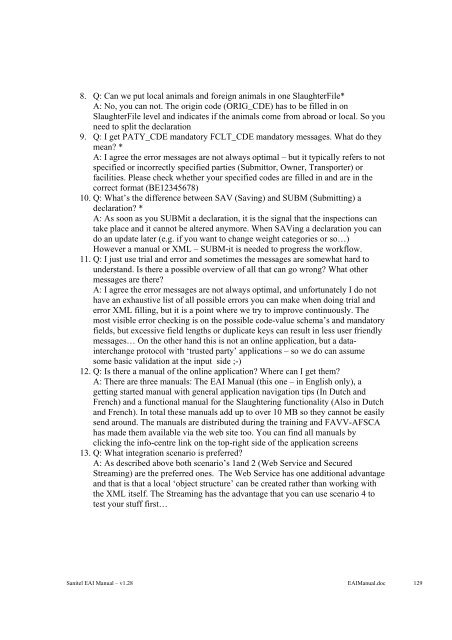
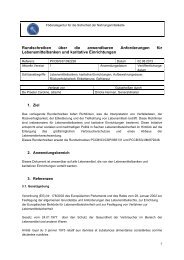
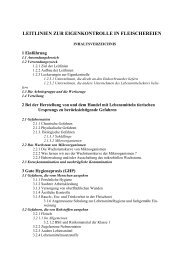

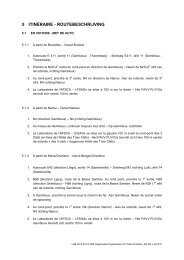
![DPA 2298 Schweine: Aujeszky-Impfung [2298] v2 - FAVV](https://img.yumpu.com/22032815/1/184x260/dpa-2298-schweine-aujeszky-impfung-2298-v2-favv.jpg?quality=85)
